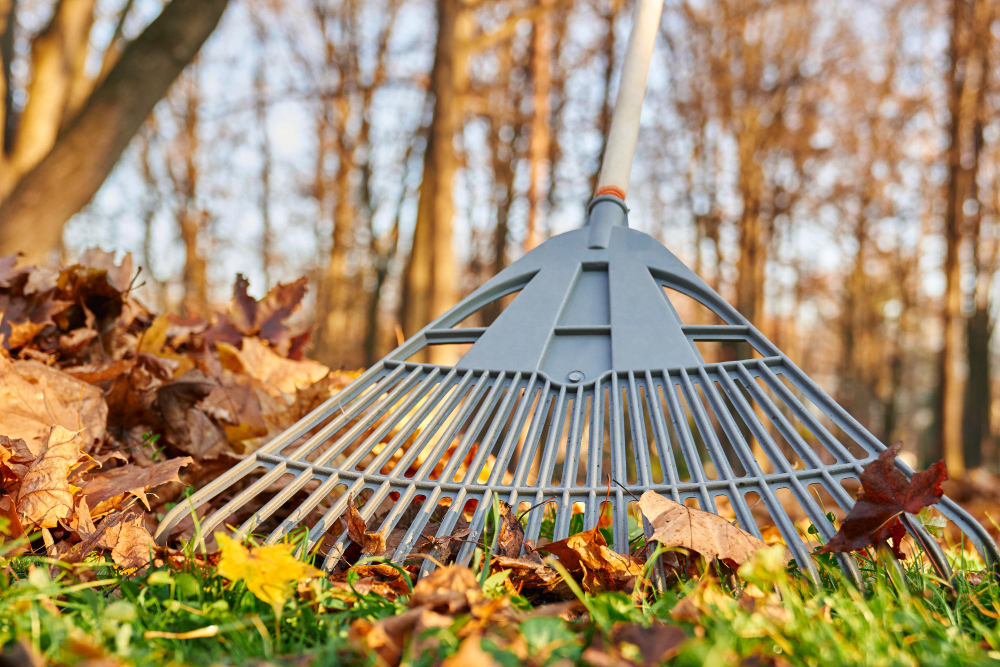- Lawn Turf
- Artificial
- Soil
- Timber
- Composite Decking
- Paving & Stone
Get In Touch With Our Experts Today!
Give us a Call! - Seed & Fertiliser
- Dressing
- Bark

October 29, 2025 Autumn TurfTurfTurf AdviceTurf TipsWinter turf
As the days grow shorter and the temperature drops, your lawn will begin to slow its growth and prepare for winter hibernation. This is an entirely natural process that allows your grass to recover after summer. But that doesn’t mean turf care stops!
November is a crucial month for maintaining a strong and healthy lawn that will survive the winter and thrive in the spring. Whether you’re a homeowner tending to your own lawn or a landscaper managing clients’ gardens, here are the best turf tips and tasks to keep your turf in tip-top condition.
Absolutely! It might not seem it, but autumn is a brilliant time to lay turf! With fewer people using the outdoor space, it gives your turf the chance to fully anchor in without disturbance. Weather conditions tend to work in your favour, too – mild days and rainfall mean you can easily prepare the ground and have peace of mind your new turf will stay hydrated.
If you’re laying turf in November, be sure to follow our How to Lay Turf Guide. It has top tips, in-depth step-by-step instructions and a video tutorial from George himself!
As beautiful as it is when the leaves turn from green to red to brown, when they fall onto your lawn, they don’t always look as pretty. They can also cause big problems for your grass!
If you allow leaves to pile up, they can end up smothering your lawn. They block water, oxygen and sunlight from reaching the roots, which is essential for keeping your turf resilient during winter.
Leaves, especially wet leaves, can create the perfect environment for pests or lawn diseases to thrive! If not spotted and treated straightaway, your lawn will struggle to grow or not look too good come spring.
Use a rake or leaf blower to remove leaves from your lawn. Collected leaves make great compost! So, if you have a compost bin or pile, add them in and reuse them next year. You can also add them to bug hotels or dispose of them in your green bin.
If you’re wondering whether fallen leaves will damage your lawn, head to our blog, which will tell you everything you need to know!
With limited sunlight in November, it’s important to allow as much sunlight to reach your lawn as possible! If you notice hedges, bushes or trees casting shadows on your lawn, trim them back. This will not only allow your grass and roots to absorb essential Vitamin D, maintaining optimum grass health, but it will also prevent damp areas from forming on your lawn, which can encourage lawn disease and pests.
For further tips on how to maximise sunlight reaching your turf, read our guide on How to Help Sunlight Get to the Roots of Your Lawn.
During winter, your turf will need all the strength it can gather. One way you can help is by applying an autumn/winter-based fertiliser, like our Nourish Autumn/Winter Fertiliser. These types of fertilisers are specifically formulated with high potassium and low nitrogen to prioritise stronger roots and resistance to lawn diseases over grass growth.
If you’re new to fertilising, or looking for additional tips on getting the best results, head to our What Temperature is Too Cold to Fertilise and Five Key Points to Feeding & Fertilising articles.
November, especially in the UK, tends to bring a lot of rain! Pair this with cooler temperatures and less sunlight, and surface water doesn’t evaporate as quickly as it does in the summer. If we experience consistent downpours, your lawn can also struggle to absorb and drain water, resulting in water pooling on the surface or creating a soggy, waterlogged lawn.
A quick solution is to make sure your drainage is clear, allowing water to flow easily. If you notice any compacted areas of soil, you can also aerate these areas – use a garden fork to spike holes into the ground, creating channels for water to flow. For extra advice, read our article on How to Prevent My Lawn from Being Waterlogged.
Depending on the weather, you may not need to mow your lawn in November. However, if we experience a warm October, your grass may have had one final growth spurt! If that’s the case, pick a dry, mild day to give your turf one final cut.
Keep your mower on a higher setting and maintain grass blades at a height of 4-5cm. This’ll help protect your turf from frost throughout winter.
Paying attention to your lawn now, and taking a little extra care, means you’ll be rewarded with a lush, vibrant and robust lawn in the new year. Healthy turf in winter is a result of consistent, preventative maintenance, which the tips above can help you with.
Whether you’re installing a fresh new lawn or improving existing turf, speak with our friendly customer service team. We can help you with any turf queries and recommend the best type of turf for your project.
For landscapers, don’t forget to check out our Trades Account for unique discounts and deliveries.